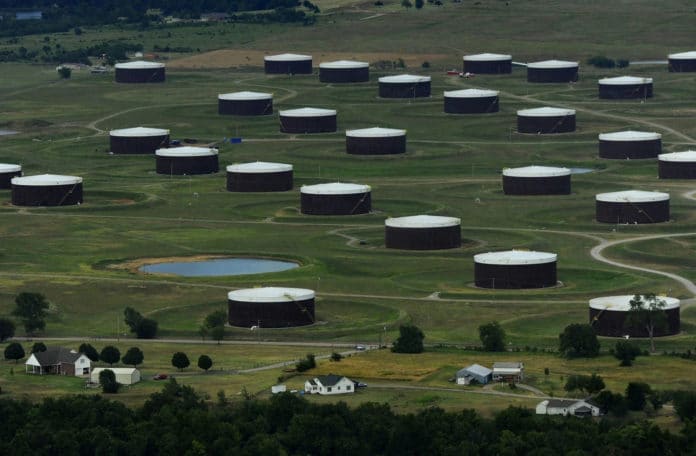The International Energy Agency said Thursday that it expected little impact from this weekend’s meeting of the Organization of the Petroleum Exporting Countries in Doha, Qatar, but the agency said that oil prices would rise in the second half of the year as falling non-OPEC supplies and rising global demand bring the market into balance.
Crude oil prices have been climbing recently, in part in anticipation that OPEC would agree to freeze production at current levels or even trim output. But the IEA said “if there is to be a production freeze, rather than a cut, the impact on physical oil supplies will be limited.”
Later in the year, however, crude oil prices could rise “well above” the current levels of about $40 a barrel, the IEA said.
Meanwhile, however, low oil prices are taking a toll on U.S. oil and gas companies and the banks that lend them money. U.S. banking giant Wells Fargo said Thursday that a $1.1 billion increase in non-performing loans to the oil and gas sector had pushed its nonaccrual loan total to $12.2 billion. The bank’s provision for credit losses rose by $414 million from a year ago due to losses “primarily related” to oil and gas companies, Wells Fargo said.
Bank of America, which reported a drop in earnings on Thursday, said its provision for credit losses increased by $457 million, driven primarily by increased losses in the energy sector.
In other market news, the number of Americans filing for unemployment benefits fell last week, dropping to a level last seen in November 1973 as the labor market continues to strengthen despite lackluster economic growth. Initial claims for state unemployment benefits decreased 13,000 to a seasonally adjusted 253,000 for the week ended April 9, the Labor Department said Thursday.
And in Asia, currencies fell against the U.S. dollar after the Singapore central bank unexpectedly eased its interest rate policy. The rising U.S. dollar makes it harder for U.S. manufacturers to compete against their Asian rivals.
U.S. stock markets hardly budged after the opening bell Thursday. The Nasdaq dropped 0.14 percent in early minutes of trading, while the Dow Jones industrial average was level.
Crude oil prices have been a major factor in U.S. markets as the price for the benchmark West Texas Intermediate grade dipped below $30 a barrel in January, a 12-year low. While giving a boost to consumers and dampening inflation, low crude oil prices have rattled stock markets as well as bond markets where the struggling oil sector has been driving high default rates.
The IEA said Thursday that petroleum demand would grow 1.2 million barrels a day this year as India – where consumption is rising at an 8 percent annual rate – possibly replaces China as the “main engine of global demand growth.”
Meanwhile, low prices have discouraged oil companies from investing and, as a result, the U.S. shale oil boom has dissipated. By early April, the U.S. drilling rig count had fallen nearly 80 percent from the October 2014 peak, the IEA noted. U.S. oil production reached as high as 9.6 million barrels a day in June 2015, according to the EIA, but this month slipped below 9 million barrels a day for the first time since October 2014.
Falling U.S. output is the main reason the IEA is forecasting a 700,000 barrel a day drop in non-OPEC oil production. “The much-anticipated slide in production of light, tight, oil in the United States is gathering pace,” it said.






